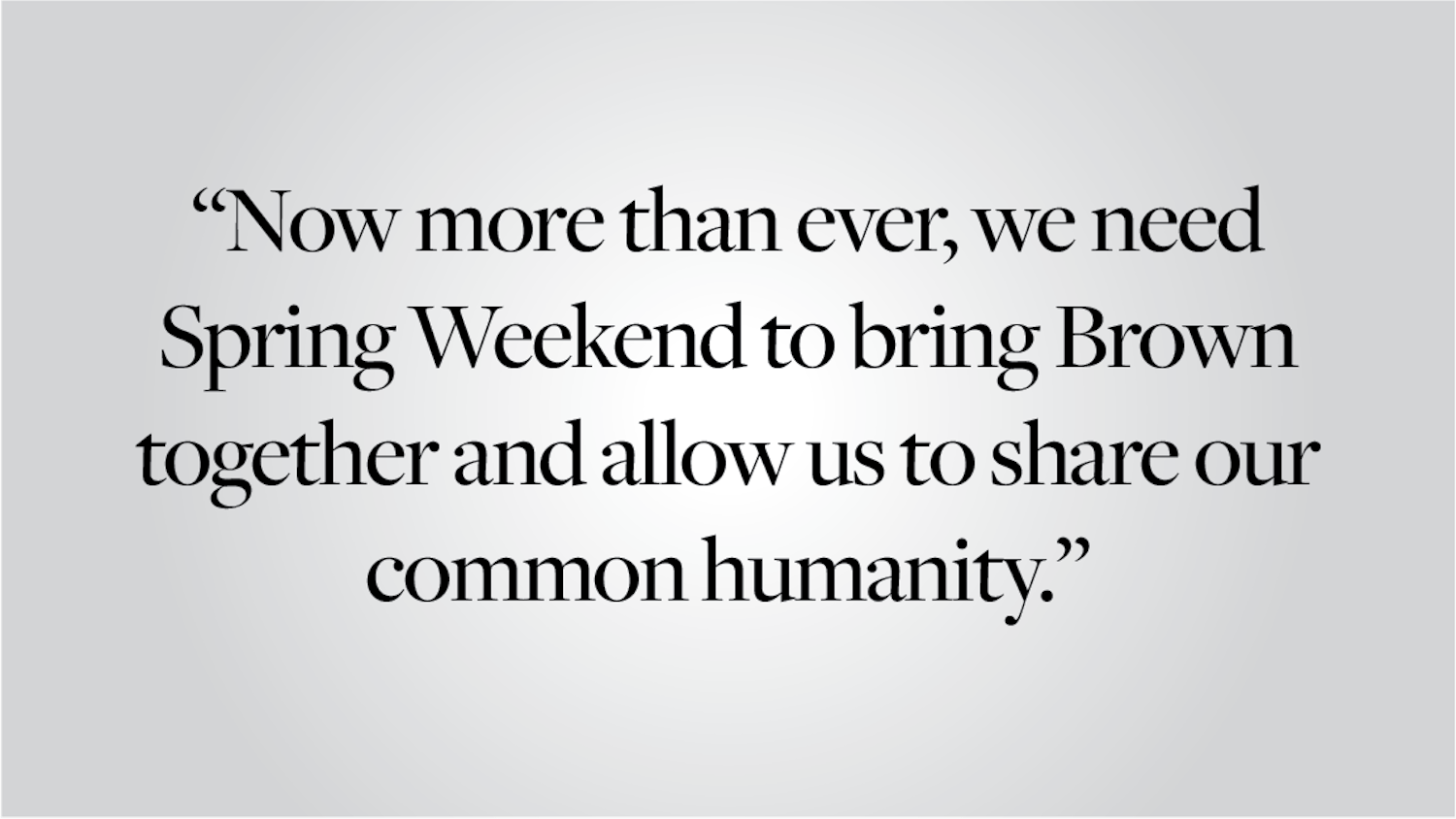Recent opinion pieces in The Herald have made assumptions about the University’s admission process and the priorities we emphasize. We believe strongly that Brown flourishes because of the talents of its students, faculty, staff and alumni, and it is disheartening and disappointing to read assertions about our goals that paint a picture of the University that does not resemble the reality we have worked hard to achieve.
While one Letter to the Editor expressed skepticism over our efforts to achieve gender balance (“Letter: Brown should go gender-blind in admission,” Dec. 6) and another wrote that we have “institutionalized” a preference for elite private high schools over others (“Colby ’20: Equal admission rates for all,” Jan. 26), these opinions are not grounded in fact. They do a disservice to our mission, which includes a focus on strengthening the human connections on College Hill.
It is not possible to detail the expansive multitude of ways we demonstrate a commitment to building a student body that is exceptionally talented and diverse, but it’s important to ensure that perceptions about Brown’s admission practices are shaped by facts. There are several that help address the recent misplaced claims.
First, in the past year alone, as a result of targeted recruitment, applications from first-generation students have risen by 14 percent. Brown has specific initiatives focused on ensuring that students from a full range of backgrounds are well represented in our applicant pool. One such program is QuestBridge, a partnership designed to help Brown attract and enroll high-achieving, low-income students from around the United States. This year, Brown has increased its matches with QuestBridge, matching with 20 QuestBridge students compared to three last year. In addition, in the past year, our admission officers have doubled the number of visits to community-based organizations that advance college access. Recognizing that applying to college can also be a costly process, we waive the application fee for any student who finds it a hardship.
The second important point is that Brown admission counselors visited nearly 700 high schools in the fall of this year, and 70 percent of those were public schools. There is no school or set of high schools that receives priority review. All high schools are treated equally, and we always review applicants in the context of their high school setting. We also do not compare students from one high school to another. Each and every applicant is considered on their individual merits, talents and fit for Brown.
Third, recognizing that a college visit is one of the strongest determining factors for a student’s acceptance of Brown’s offer of admission, we doubled the funding available for travel grants to low-income students to attend A Day on College Hill. The program brings admitted students from all income groups to campus to get a sense of life at Brown. And we remain committed to need-blind admission; we do not consider an applicant’s ability or inability to pay the cost of tuition when making admission decisions (for U.S. citizens).
The next point is that the admission process is the same for all students independent of gender. There is absolutely no inherent advantage or disadvantage based on gender identification. Admission and enrollment patterns at Brown often mirror patterns that exist nationwide. Gender gaps that begin in primary school and continue through tertiary education should not be mistaken as any form of discrimination at the higher education level.
And finally, it’s worth noting that the objective academic qualifications of our admitted and enrolled students at Brown are as high as ever.
In the admission office, we know that Brown is a better institution when we invite diverse perspectives from students with intellectual passion and a deep conviction to contribute to and continue to strengthen the community. The admission office — with many staff who are alums — is part of this community and has the honor of helping to build it.
The recent opinion pieces in The Herald suggest that, perhaps, the admission process is not “fair.” But it’s important not to confuse “selective” with “fair.” It’s an unfortunate reality that any admission process that admits only 9 percent of its applicants may seem unfair to some applicants in the other 91 percent. We should be proud that over 32,000 students applied for admission this year. And yet our commitment to maintaining a first-year class of 1,665 students means that many remarkable applicants will not be offered admission. Our goal is to admit and enroll a class that will uphold Brown’s values of academic excellence and diversity of thought.
I encourage any current student or alum to join in the efforts we have already undertaken. Volunteer to tutor at a local public school; offer encouragement to a young student who dreams of one day attending college; offer your support to a college access organization; or sign up to be an alumni interviewer and share your love of Brown.
We are together in the shared vision of Brown’s success. As we move forward with the class of 2021 and beyond, we will continue to focus on students who demonstrate deep intellectual curiosity, potential for leadership, diverse perspectives and a commitment to the Brown community and to the world.
Logan Powell is Brown University’s Dean of Admission. He can be reached at logan_powell@brown.edu. Please send responses to this opinion to letters@browndailyherald.com and other op-eds to opinions@browndailyherald.com.




